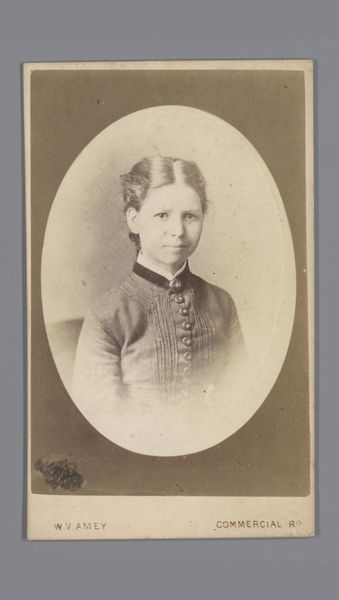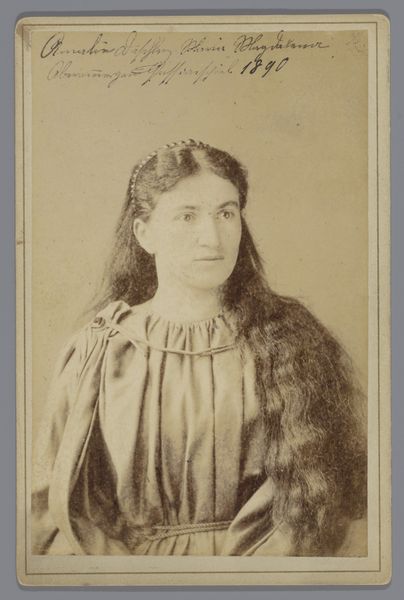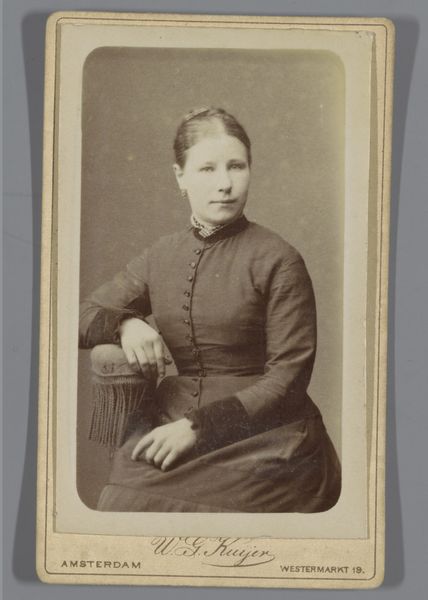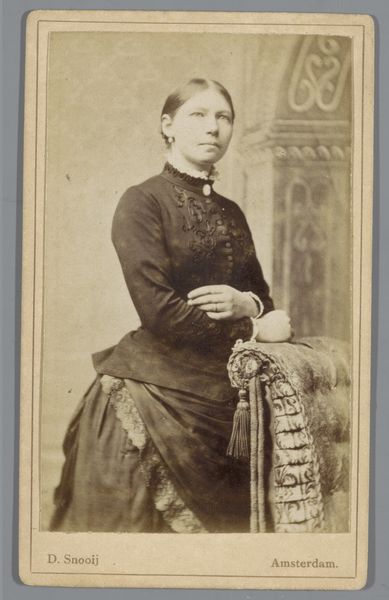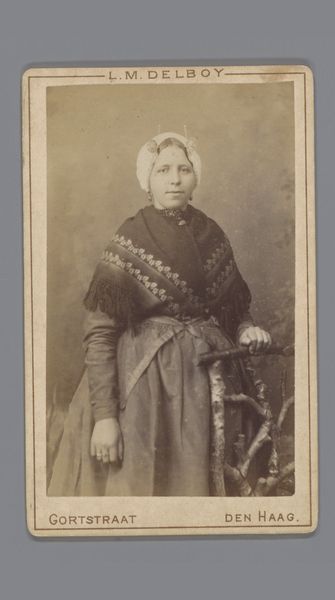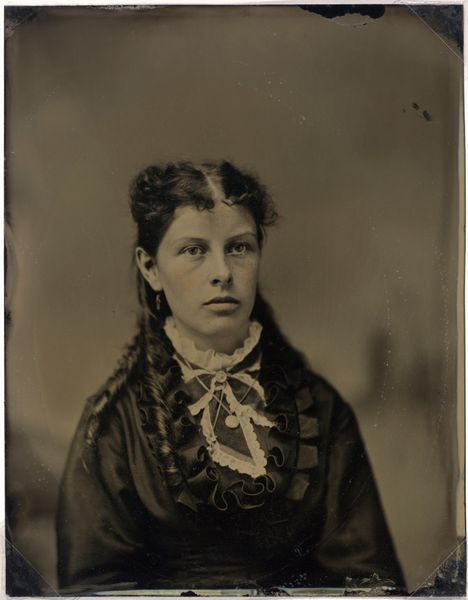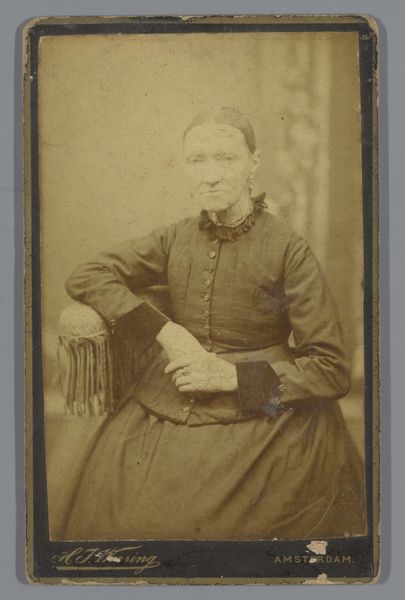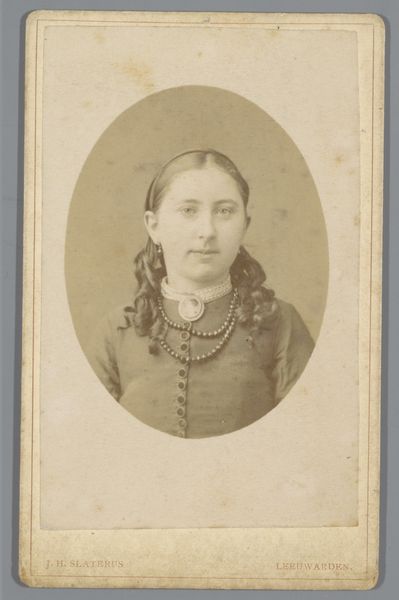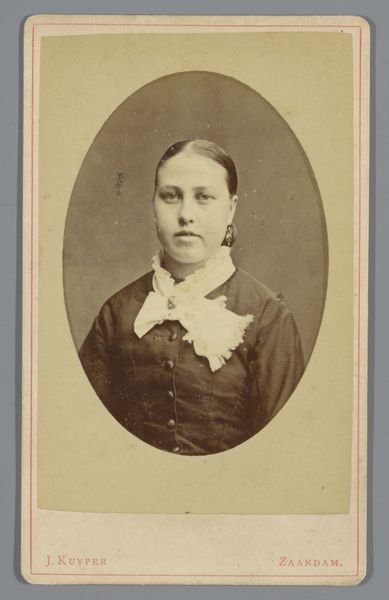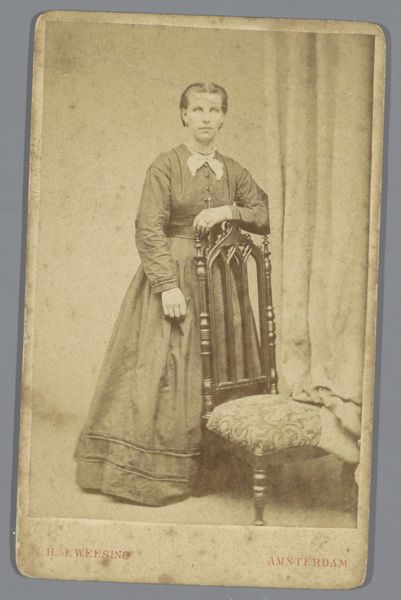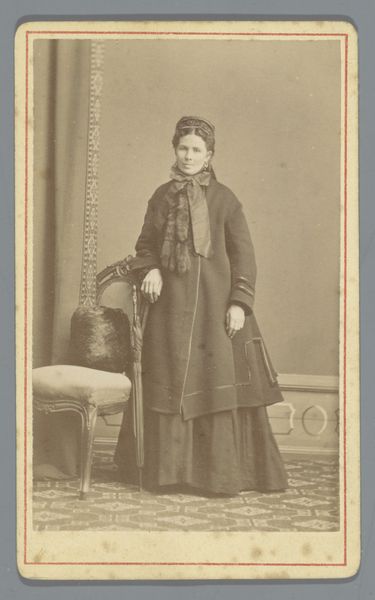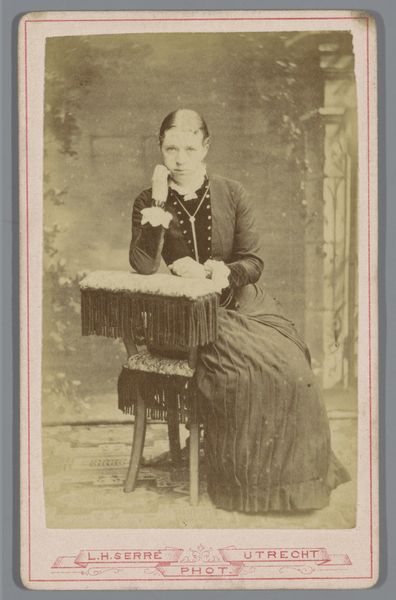
Portret van een onbekende vrouw, staande achter een fauteuil 1884 - 1896
0:00
0:00
photography, albumen-print
#
portrait
#
photography
#
academic-art
#
albumen-print
#
realism
Dimensions: height 104 mm, width 65 mm
Copyright: Rijks Museum: Open Domain
Editor: So, here we have Friedrich Julius von Kolkow's "Portrait of an Unknown Woman, Standing Behind an Armchair," an albumen print dating from 1884 to 1896. It’s a pretty straightforward photograph, but something about the woman’s direct gaze is very compelling. What symbols jump out at you? Curator: That gaze is powerful, isn't it? It locks us in. Her reserved stance speaks volumes of the societal constraints placed on women during this era, and even today. Consider, too, the armchair: a symbol of domesticity, luxury, perhaps even confinement. Editor: Confinement, that’s interesting! I hadn’t considered it in that way. I mostly thought it was just there as a prop, you know? To fill space. Curator: Think about how women were perceived and portrayed. What purpose does her plain dress serve, in contrast to the opulent tassel hanging from the armchair? Does it point to the class, and status, that is at the centre of the picture? Editor: Yes, definitely there’s a class thing there. It feels like there’s so much unsaid in this image. What’s the deal with leaving her nameless? Curator: Exactly! And perhaps the photographer is making a point, as he makes her an every-woman figure: a visual representation of widespread repression. Notice, the way her hands are placed conveys composure and dignity in spite of the unknown constraints. The image captures a cultural memory – or warning - to those in similar position. Editor: I never would have noticed all that symbolism on my own. Thank you for showing me a different perspective! Curator: My pleasure! It’s remarkable how a seemingly simple portrait can unveil layers of social meaning, once you begin looking beyond the surface.
Comments
No comments
Be the first to comment and join the conversation on the ultimate creative platform.
